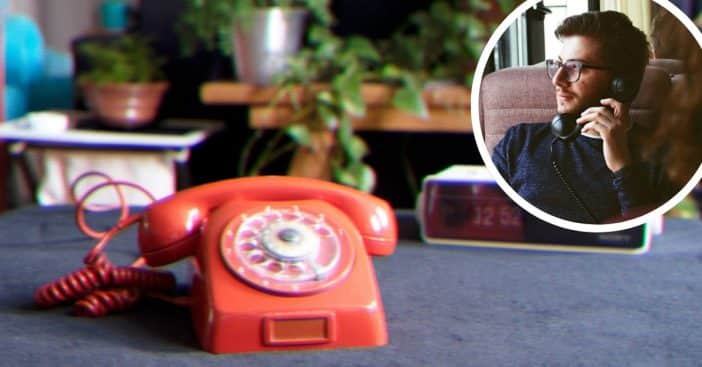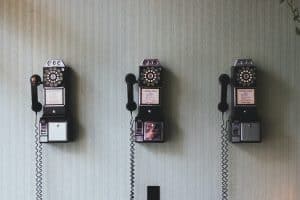
FaceTime, streaming, Google Docs, three-way calls. Before all these marvelous feats in communication, there were telephone party lines. These existed when phone providers set up a shared service line for the phone, which serviced multiple homes in the neighborhood and doubled as a way for some very unqiue entertainment fuel.
These types of phone setups actually date back to the 1800s as a means of conserving resources. Having a multiparty line meant one person could pick up a telephone and hear the goings-on of a phone user some houses down. Despite their decades-old origins, party lines stuck around until relatively recently, though those who are millennials and younger probably won’t know of them. Why won’t we ever see this wildcard way of communicating ever again?
The rise and reign of telephone party lines

Also known as local loop telephone, party lines have been around since the advent of the communication device itself. Using multiparty lines allowed companies to connect multiple houses to one line, which helped conserve limited resources needed to install full telephone systems; wires, in particular, were very elusive and made the job expensive, notes Southern Living.
RELATED: Research Shows Kids Reading Less Than Ever, But It’s Not Just Because Of Phones
Half a decade later, the multiparty line – and phones in general – had a home across the country, among the densely and sparsely populated regions alike. Whenever possible, phone companies pushed for using party lines; city dwellers would get the service at a discount and suburban or rural areas were immediately put on one to deal with the cost of covering large swaths of distance.
Occupational hazards and guaranteed fun

Students especially loved party lines, in all their varieties – because there were other versions of this sound-based bridge out there, like party lines that operators set up and charged several cents for that callers could access by dialing 550-TEEN. Teens at school would spread word of a known party line opening up. Word spread throughout the school day and kids would amass an alarming phone bill for their parents to contend with.
But even those who weren’t trying to be participants in this communal system, they could end up as one anyway. One caller would reach out and ring multiple houses at once – who should pick up? Working with this phone system presented unique hurdles that required creative solutions; different households had different ringing patterns and tones, allowing for each family to know when the call was for them or a neighbor.
As for the group bridging services, companies leaped at the chance to advertise to teens, running commercials during optimal hours and in relevant periodicals. It wasn’t hard; rural residents craved excitement and connectivity. When one young woman was warned of an impending bill, she said, “I don’t care. If there was no phone, I wouldn’t be living right now. In my town, there’s nothing to do.” For those who ended up communicating with strangers, they could say whatever they wanted about themselves – an early version of making up an online persona. But it also did provide a sense of community they might not otherwise have, like when some numbers would be reserved for fans of different bands, wrestlers, movies, and the like.

But for all the strange thrills of party lines, they still came with problems. The types that connected neighbors to one line meant many families had to share time on the phone, leading to much conflict. It got to a point where legislation was past demanding that a user had to hang up if another caller said they had an emergency; this only sometimes worked.
Like with many fads, new technology eventually led to its dissolution. Developments in phone services – especially answering machines, call waiting, and call forwarding made party lines of this variety unsustainable. Still, they managed to hold on, with some 2.8 million people using party lines as recently as 1987. The internet acted as a final nail in the coffin and mobile phones made sure that casket stayed six feet under. By ’92, Southwestern Bell announced they would officially stop offering the service and make everything its own private line.
But still, party lines were a unique bundle of fun, hazards, and foreshadowing of things to come. Did you ever use a party line of any kind?

